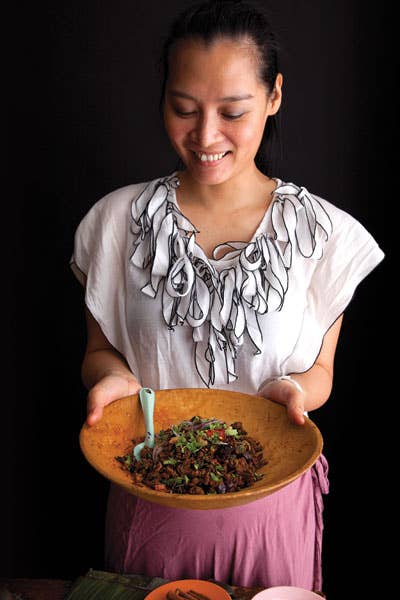
Laab
I first tasted laab years ago at a rural market in southern Yunnan, the Chinese province that borders Southeast Asia. It was laab at its plainest, and closest to its origins: raw minced pork blended with hot chiles, Sichuan pepper, and salt. It was the rainy season, and I stood under an awning with a crowd of locals, eating, like them, with my fingers, delicious mouthful by mouthful.
Since then I have come across this minced pork salad all over Southeast Asia, and I have found that it varies both by region and by cook. The Shan in Burma lightly fry minced pork with shallots, lemongrass, galangal, sesame seeds, and a roasted chile paste. It's hard to beat. In northeast Thailand and Laos, laab is made of minced meat lightly poached in broth, then dressed with chiles, fresh herbs, and roasted rice powder, and eaten with sticky rice.
But the Tai Koen people of Northern Thailand take laab to a whole new level, a sophisticated evolution of the original. In traditional northern-style pork laab, the minced meat is enriched with finely sliced pork liver and heart as well as a little pork blood, then mixed with a nutmeg-chile-black pepper spice blend and lightly fried in garlic oil, brightened with fresh herbs, and topped with fried garlic, pork cracklings, and more herbs. Dazzling.
Naomi Duguid, is a_SAVEUR contributing editor and author of_ Burma: Rivers of Flavor (Artisan Books, 2012)
Keep Reading
Continue to Next Story










